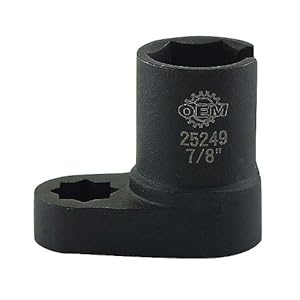Hey, I've done a lot of searching online and couldn't quite find the appropriate help I was looking for.
One of the sites were pretty helpful...
http://www.partsource.ca/doityoursel...gen-Sensor.asp
However, it's not very model specific, but I did some searching under my car and I think I found what I'm looking for...
My mechanic shop was going to charge me 300+ dollars for o2 sensor parts and labor, I had to decline it, because from what I've learned, o2 sensor replacement can be a simple do it yourself job... of course, with the right tools.
I'm a complete newb when it comes to cars, I've never done work myself, except replacing stereo and speakers, and recieving help from my father replacing the radiator.
I need help understanding how to go about replacing my o2 sensors. I understand they're under the exhaust, and I tried finding it, but I don't know if I'm correct. Here is a picture,

I'm sorry, that's really the best picture I could get, but I'll give you a clearer idea of what I saw. Between that, (I don't remember what it's called) there are two, what it seems like, plugs going in. Not in that part itself but beside it, they look like the o2 sensors. I tried jacking up the other side but I couldn't get under it enough to get a better picture. I hope that gives you a better idea though.
Is there any specific tools I will need to replace them? Anti-seize, wires, ratchets, philips, do I need to cut wires, etc..
I appreciate you reading this and look forward to a response. Thank you everybody. If you have any more questions I'll be here to answer them.
-- http://i51.tinypic.com/zxqkhu.jpg The full size image.
One of the sites were pretty helpful...
http://www.partsource.ca/doityoursel...gen-Sensor.asp
However, it's not very model specific, but I did some searching under my car and I think I found what I'm looking for...
My mechanic shop was going to charge me 300+ dollars for o2 sensor parts and labor, I had to decline it, because from what I've learned, o2 sensor replacement can be a simple do it yourself job... of course, with the right tools.
I'm a complete newb when it comes to cars, I've never done work myself, except replacing stereo and speakers, and recieving help from my father replacing the radiator.
I need help understanding how to go about replacing my o2 sensors. I understand they're under the exhaust, and I tried finding it, but I don't know if I'm correct. Here is a picture,

I'm sorry, that's really the best picture I could get, but I'll give you a clearer idea of what I saw. Between that, (I don't remember what it's called) there are two, what it seems like, plugs going in. Not in that part itself but beside it, they look like the o2 sensors. I tried jacking up the other side but I couldn't get under it enough to get a better picture. I hope that gives you a better idea though.
Is there any specific tools I will need to replace them? Anti-seize, wires, ratchets, philips, do I need to cut wires, etc..
I appreciate you reading this and look forward to a response. Thank you everybody. If you have any more questions I'll be here to answer them.
-- http://i51.tinypic.com/zxqkhu.jpg The full size image.






Comment